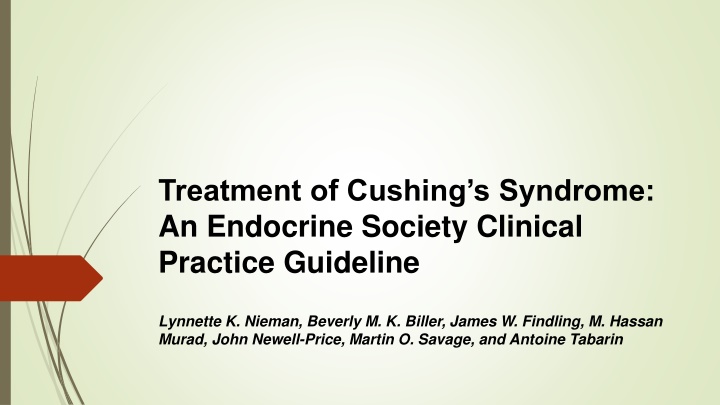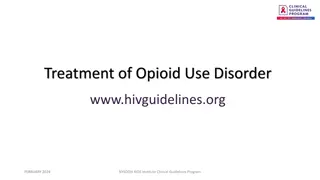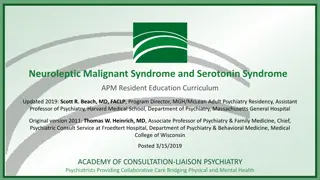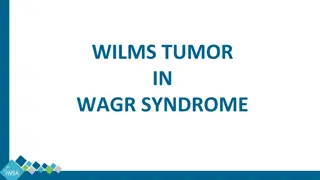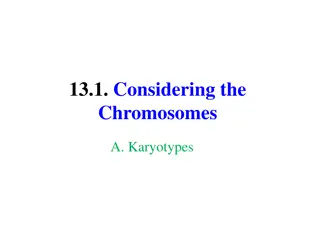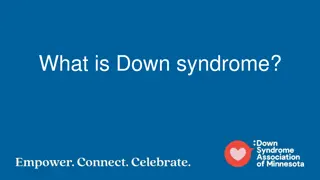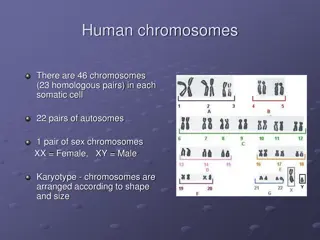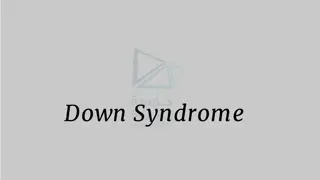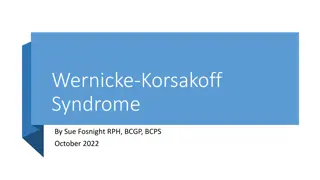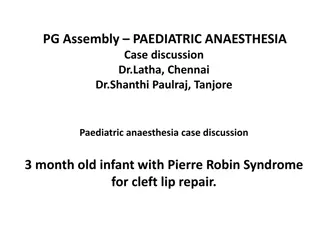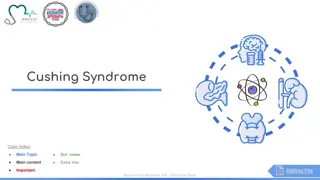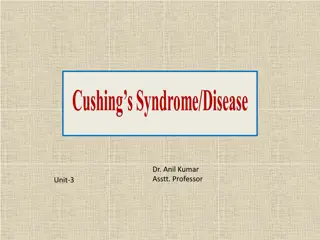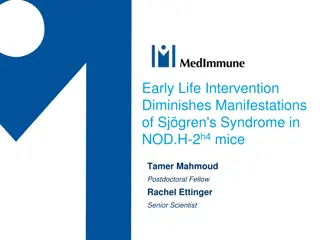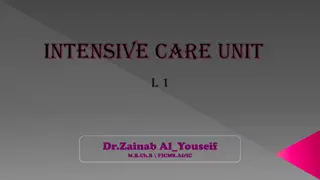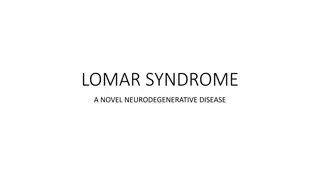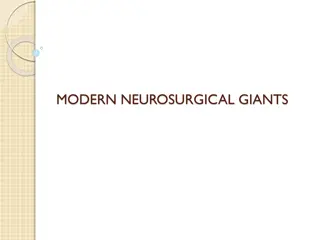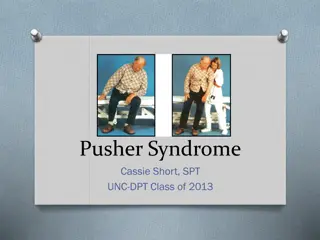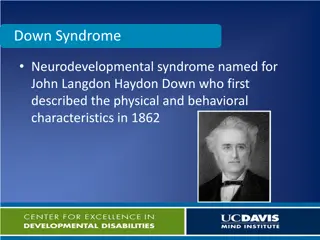Treatment Goals for Cushing's Syndrome: Recommendations and Evidence
This content delves into the clinical practice guidelines for the treatment of Cushing's syndrome provided by the Endocrine Society. It emphasizes goals, recommendations, and evidence-based strategies for managing the condition effectively, focusing on normalizing cortisol levels, managing comorbidities, and improving quality of life. The guideline underscores the importance of a proper diagnosis before treatment initiation, especially in life-threatening situations.
Uploaded on Apr 04, 2025 | 0 Views
Download Presentation

Please find below an Image/Link to download the presentation.
The content on the website is provided AS IS for your information and personal use only. It may not be sold, licensed, or shared on other websites without obtaining consent from the author.If you encounter any issues during the download, it is possible that the publisher has removed the file from their server.
You are allowed to download the files provided on this website for personal or commercial use, subject to the condition that they are used lawfully. All files are the property of their respective owners.
The content on the website is provided AS IS for your information and personal use only. It may not be sold, licensed, or shared on other websites without obtaining consent from the author.
E N D
Presentation Transcript
Treatment of Cushings Syndrome: An Endocrine Society Clinical Practice Guideline Lynnette K. Nieman, Beverly M. K. Biller, James W. Findling, M. Hassan Murad, John Newell-Price, Martin O. Savage, and Antoine Tabarin
1. Treatment goals for Cushings syndrome 1.1 In patients with overt CS, we recommend normalizing cortisol levels or action at its receptors to eliminate the signs and symptoms of CS and treating comorbidities associated with hypercortisolism. (1 O)
1.2 We recommend against treatment to reduce cortisol levels or action if there is not an established diagnosis of CS. (1 OOO)
1.3 We suggest against treatments designed to normalize cortisol or its action when there is only borderline biochemical abnormality of the HPA axis without any specific signs of CS. The benefit of treating to normalize cortisol is not established in this setting. (2 )
Evidence CS is a condition of pathological hypercortisolism that includes demonstrable clinical features.
The goals of treating CS are to eliminate its primary cause and achieve remission so as to eliminate the associated signs, symptoms, and comorbidities and to improve quality of life (QOL).
Cardiovascular disease, venous thrombosis, and infections are the primary causes of the excess mortality rate we see in CS.
Because all treatments carry risk, clinicians should establish a diagnosis of CS before administering them .
However, in life-threatening situations, a clinical diagnosis with minimal available biochemical data may justify prompt treatment.
2. Optimal adjunctive management 2.1 We recommend providing education to patients and their family/caretaker(s) about their disease, treatment options, and what to expect after remission. (Ungraded best practice statement)
2.2 We recommend that all patients receive monitoring and adjunctive treatment for cortisol-dependent comorbidities (psychiatric disorders, DM, HTN, hypokalemia, infections, dyslipidemia, osteoporosis, and poor physical fitness). (Ungraded best practice statement)
2.3 We recommend that a multidisciplinary team, including an experienced endocrinologist, takes patient values and preferences into consideration and provides education about the treatment options to the patient . (Ungraded best practice statement)
2.4 We suggest evaluating CS patients for risk factors of venous thrombosis. (2 )
2.5 In patients with CS undergoing surgery, we suggest perioperative prophylaxis for venous thromboembolism. (2 )
2.6 We recommend that clinicians discuss and offer age-appropriate vaccinations to CS patients particularly influenza, Herpes zoster, and pneumococcal vaccinations due to an increased risk of infection. (Ungraded best practice statement)
Hypercortisolism alters coagulation-factor profiles for up to 1 year after a surgical cure and carries an increased risk of venous thrombosis, especially in the 4 weeks after surgery .
3. First-line treatment options 3.1 We recommend initial resection of primary lesion(s) underlying CD, ectopic and adrenal (cancer, adenoma, and bilateral disease) etiologies, unless surgery is not possible or unlikely to significantly reduce glucocorticoid excess. (1 )
3.1a We recommend unilateral resection by an experienced adrenal surgeon for all cases of benign unilateral disease. (1 )
Evidence In experienced hands, unilateral adrenalectomy is curative in nearly 100% of adults and children with cortisol producing adrenal adenomas; the complication rate is higher when performed by surgeons with less experience .
3.1b We recommend localizing and resecting ectopic ACTH-secreting tumors with node dissection as appropriate. (1 )
3.1c We recommend TSS by an experienced pituitary surgeon as the optimal treatment for CD in pediatric and adult patients. (1 )
Evidence Many centers have replaced the transnasal route with an endoscopic endonasal approach, but both methods can be effective.
Successful resection is most likely when performed by an experienced neurosurgeon who has a high volume of these cases.
These are typically benign microadenomas (< 1 cm diameter) and are evident on pituitary MRI in approximately 60% of adults and approximately 55% of children .
However, because 10% of healthy adults have pituitary lesions 6 mm that are visible on MRI , the presence of a lesion does not definitively confirm the diagnosis of CD or identify the causal tumor.
In addition, there is a 12% rate of abnormal pituitary MRI scans in patients with EAS and a 12% rate of false localization by MRI in patients with surgically proven CD .
When feasible, all patients with ACTH dependent CS and no obvious causal neoplasm (> 6 mm) should be promptly referred to an experienced center that can safely and reliably perform inferior petrosal sinus sampling to distinguish a pituitary from a nonpituitary (ectopic) cause.
IPSS does not reliably identify the tumor site because a side-to-side gradient of >1.4 correctly predicted location in only 56 69% of adults and 59 81% of children.
3.1ci We recommend measuring serum sodium several times during the first 5 14 days after transsphenoidal surgery. (1 )
3.1cii We recommend assessing free T4 and prolactin within 1 2 weeks of surgery, to evaluate for overt hypopituitarism. (1 )
3.1ciii We recommend obtaining a postoperative pituitary MRI scan within 1 3 months of successful TSS. (Ungraded best practice statement)
Evidence As with any TSS, potential complications include electrolyte disturbances, hemorrhage, and meningitis.
Hyponatremia occurs in 510% of patients, usually between postoperative days 5 and 10. This complication is more common after extensive gland exploration in menstruating women.
Diabetes insipidus is relatively common in the first few postoperative days but is usually transient.
We recommend measuring serum sodium several times during the first 5 14 days after surgery to address both possibilities, either daily or guided by the patient s intake and output.
Because of the 5- to 7-day half-life of T4, a decrease of free or total T4 within 1 week of surgery may identify significant hypothyroidism (when compared to preoperative values).
Acquired prolactin deficiency is a marker for hypopituitarism that may occur immediately after TSS.
Hormonal deficits may be secondary to hypercortisolism and also transient; therefore, we recommend reevaluating the need for replacement therapy .
Permanent hypopituitarism is more common after surgery for a microadenoma secreting ACTH than for those secreting GH. This probably reflects a tendency to more aggressive surgery but is not fully explained.
3.1d We recommend surgical resection of bilateral adrenal disorders (1 )
and suggest medical therapy to block aberrant hormone receptors for bilateral macronodular adrenal hyperplasia (BMAH) (2 ).
Bilateral macronodular adrenal hyperplasia The terminology in this field is changing. In primary BMAH, the disease eventually affects both adrenals, although it may present initially as an asymmetric unilateral Nodule .
However, screening family members (with dexamethasone 1 mg) is indicated until genetic tests are available.
Primary pigmented nodular adrenal disease Laparoscopic bilateral adrenalectomy is the definitive treatment of choice and is curative in most cases of primary pigmented nodular adrenal disease, regardless of age .
It is important to screen patients with suspected primary pigmented nodular adrenal disease at intervals for features of Carney complex, particularly for atrial myxoma.
If clinicians detect Carney complex, they should also test family members.
4. Remission and recurrence after surgical tumor resection 4.1 We suggest an individualized management approach based on whether the postoperative serum cortisol values categorize the patient s condition as hypocortisolism , hypercortisolism , or eucortisolism . (Ungraded best practice statement)
4.2 We recommend additional treatments in patients with persistent overt hypercortisolism. (1 )
4.3 We recommend measuring late-night salivary or serum cortisol in patients with eucortisolism after TSS, including those cases where eucortisolism was established by medical treatment before surgery. (1 )
4.4 We recommend using tests to screen for hypercortisolism to assess for recurrence in patients with ACTH dependent CS. (1 )
